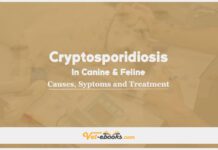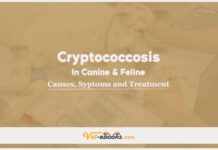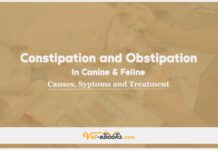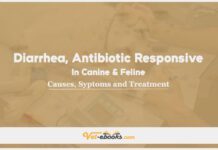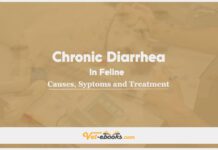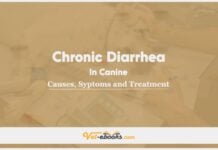Canine Infectious Diarrhea: Causes, Symptoms and Treatment
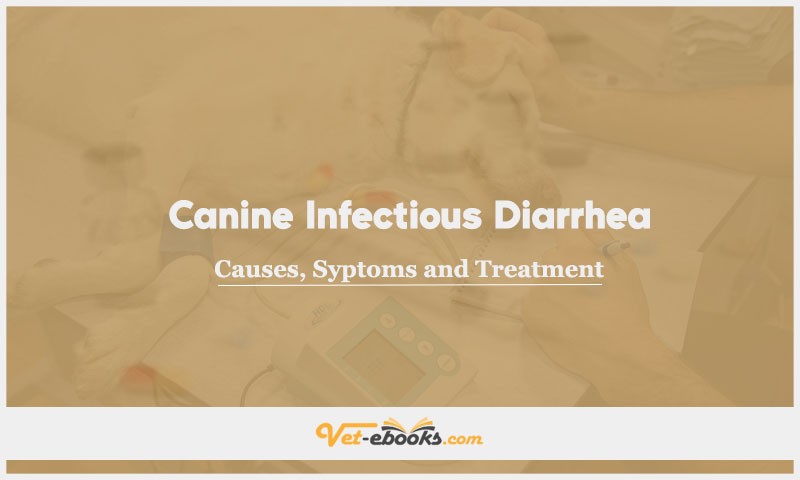
Overview
Diarrhea can be attributed to various factors, including viruses, enteropathogenic bacteria, protozoa, or parasites, leading to diarrhea in either the small intestine, large intestine, or a combination of both.
Secondary systemic signs can also manifest in cases of canine parvovirus (CPV)-2 and salmonellosis.
Causes of Canine Infectious Diarrhea
Causes
- Viral causes include coronaviruses, CPV-2 (canine parvovirus-2), and circoviruses.
- Bacterial culprits encompass Campylobacter spp., Clostridium perfringens enterotoxin, toxins produced by Clostridium difficile, and various strains of Salmonella spp.
- Parasitic factors involve Toxocara spp., Ancylostoma spp., Toxascaris leonine, Dipyldium caninum, and Trichuris vulpis.
- Protozoal contributors include Giardia spp., while coccidial agents encompass Cryptosporidium spp. and Cystoisospora spp.
Risk factors
- Young dogs, especially puppies and young adults, are more susceptible to these infections, particularly in cases of viral enteritis, Cryptosporidium spp. infection, and infestations with roundworms like Toxocara and Toxascaris, as well as Cystoisospora spp. and Campylobacter spp.
- Antimicrobial drugs and immunosuppressive medications increase the risk of hospital-acquired colonization with Clostridium difficile.
- Overcrowded conditions and inadequate sanitation play a role in the spread of these infections.
- Lack of regular administration of parasiticides can contribute to the risk.
- Dogs with environmental exposure to livestock or wildlife are at higher risk of contracting infections like Cryptosporidium spp., Campylobacter spp., and Giardia spp.
Pathogenesis of Canine infectious diarrhea
- Usually, transmission occurs through the ingestion of contaminated fecal matter, known as the fecal-oral route.
- Diarrhea can arise from different mechanisms, including the effects of enterotoxins, osmotic imbalances, or the invasion of the intestinal epithelium, leading to inflammation.
- 50% of dogs may experience concurrent infections.
Symptoms (History & Physical Examination) of Canine infectious diarrhea
History
Typically seen in puppies and young adult dogs, but older dogs may also be affected, especially if they are in high-risk environments.
Physical examination
- Overall observations vary from mild to significantly affected cases.
- Previous observation could involve either acute or chronic episodes of diarrhea affecting either the small or large intestine, and may potentially include symptoms like vomiting, weight loss, and reduced appetite. Importantly, there is no history of dietary indiscretion.
- Physical examination findings can vary depending on the specific cause and the severity of the condition.
- Possible findings may include signs of dehydration, poor body condition, increased bowel sounds (borborygmus), gas accumulation (flatulence), blood in the stool (hematochezia), dark, tarry stool (melena), identification of worms during rectal examination or around the anal area, as well as indications of sepsis or systemic inflammatory response syndrome (SIRS).
Diagnosis of Canine infectious diarrhea
1- From History and Physical Examination
2- Diagnostic Procedures
- Fecal flotation is utilized to identify intestinal parasitism. However, it’s important to note that false negatives can occur, as parasite eggs are intermittently shed. Dogs suspected of having intestinal parasitism should either undergo multiple fecal flotation tests or receive treatment with anthelmintic medications.
- Fecal cytology examines bacterial morphology (often revealing spirochetes and spores) and the presence of fungal or protozoal organisms.
- The Giardia ELISA test is conducted to detect Giardia infection.
- Infectious diarrhea PCR panels are capable of identifying various potential causes of diarrhea. It’s essential to interpret the results cautiously because a positive result does not necessarily establish causation, and false-negative outcomes are possible.
Pathological Findings:
- Gross examination of the intestinal mucosa might reveal parasites attached to the intestinal lining, along with multifocal hemorrhagic ulcerations, submucosal congestion, or hemorrhage. Additionally, thickening of the intestinal wall may be observed.
- Histopathological analysis of the intestine can reveal eosinophilic, neutrophilic, or lymphoplasmacytic enteritis, often accompanied by varying degrees of hemorrhage and necrosis. The extent of these findings depends on the underlying cause.
Complete Blood Count (CBC), Biochemistry, and Urinalysis:
- Increased eosinophil count may be present, which is often associated with intestinal parasitic infections.
- Anemia and/or microcytosis may indicate gastrointestinal bleeding or iron deficiency, especially in cases with a high worm burden (e.g., T. vulpis) or gastrointestinal mucosal shedding (e.g., canine parvovirus).
- Leukopenia could be seen in parvoviral enteritis (due to bacterial translocation or bone marrow suppression) or systemic salmonellosis.
- Large bowel diarrhea may result in hyponatremia and hyperkalemia, as seen in cases of T. vulpis infection.
- Dehydration can lead to azotemia (elevated nitrogen waste products) and electrolyte imbalances.
- Hypoglycemia (low blood sugar) can occur in cases of parvoviral enteritis and systemic salmonellosis.
- Panhypoproteinemia (reduced levels of all proteins) and hypocholesterolemia (low cholesterol levels) may indicate secondary protein-losing enteropathy or gastrointestinal blood loss.
Imaging:
- Abdominal radiographs may be considered if there is no improvement with symptomatic treatment to rule out other potential causes of diarrhea.
- Abdominal ultrasound is recommended for non-pediatric patients with unresponsive diarrhea.
3- Differential Diagnosis
- Acute diarrhea may be from various causes such as eating something inappropriate, ingesting a foreign object, experiencing pancreatitis, or having gastrointestinal tumors, Non-gastrointestinal factors could also be a cause, including liver issues, kidney disease, and other systemic conditions.
- These non-gastrointestinal conditions often present with additional clinical signs like reduced appetite, vomiting, and jaundice (yellowing of the skin and eyes).
- On the other hand, persistent or chronic diarrhea can be attributed to conditions like chronic enteropathy (which may respond to dietary changes or antibiotics) or inflammatory bowel disease. It could also result from chronic pancreatitis, primary gastrointestinal tumors, or non-gastrointestinal diseases affecting other organs.
Treatment of Canine infectious diarrhea
General
- Mildly affected dogs can be managed on an outpatient basis.
- Moderately to severely affected dogs may require intravenous (IV) administration of isotonic balanced electrolyte solutions to address dehydration.
- Correcting electrolyte and acid-base imbalances should be a priority through fluid therapy, which should be closely monitored.
- Dogs with hypoglycemia should receive supplemental dextrose through parenteral means.
- Severe anemia or coagulopathies from sepsis may necessitate packed red blood cell or plasma transfusions, although such cases are rare.
- Easily digestible diets are recommended until clinical signs have resolved, followed by a gradual transition (over 3-4 days) to a maintenance diet.
- In anorexic pediatric patients, nasogastric tube feeding with a liquid diet is advisable if anorexia persists for 48 hours or more.
- Environmental decontamination is crucial for preventing the transmission of most infectious agents to other pets and people, as well as preventing reinfection. Depending on the underlying cause, isolation during hospitalization may be necessary.
- Dogs with identified infectious causes of diarrhea should ideally be separated from other dogs until their clinical signs have resolved.
- Viral and parasitic enterocolitis can lead to intussusceptions, particularly in puppies.
Medications:
- In many instances, cases will resolve on their own with supportive care and time.
- Empirical treatment can be initiated if clinical signs persist before definitive diagnostics.
- Medications like metronidazole (10 mg/kg orally every 12 hours) and fenbendazole (50 mg/kg orally every 24 hours for 5 days).
- Anthelmintic treatment can involve fenbendazole (50 mg/kg orally every 24 hours for 5 days) or pyrantel pamoate (5–10 mg/kg orally for 3 days).
- Coccidiostatic treatment includes sulfadimethoxine (50–60 mg/kg orally every 24 hours for 5–10 days) or ponazuril (50 mg/kg orally once).
- Antiprotozoal drugs like fenbendazole (50 mg/kg orally every 24 hours for 5 days) can be used.
- For cases of Campylobacteriosis with persistent clinical signs, erythromycin (10–15 mg/kg orally every 8 hours) or azithromycin (5–10 mg/kg orally every 24 hours) may be prescribed.
- Probiotics may benefit dogs with bacterial enteritis exhibiting acute or chronic signs. Care should be taken to select probiotics with documented efficacy (e.g., Visbiome®).
- Patients with systemic illness, leukopenia, or suspected GI mucosal barrier breakdown (evidenced by blood in the feces) should receive broad-spectrum antimicrobial agents as appropriate to the specific etiology.
- Dogs with confirmed salmonella infection should not be treated with antibiotics unless they are systemically ill.
Some Notes:
- Metronidazole dosage should be adjusted for animals with hepatic insufficiency.
- Higher doses of metronidazole used for giardiasis or long-term use may lead to vestibular signs.
- Some dogs may exhibit sensitivity to sulfa-containing medications used for the treatment of coccidiosis.
- Monitoring should be tailored to each case and may involve reevaluating anemia, leukopenia, or electrolyte imbalances as needed.
- If clinical signs persist despite appropriate treatment, it may suggest an alternative cause of diarrhea.
- Patients with recurrent clinical signs should undergo retesting, especially when the possibility of environmental reinfection exists (e.g., giardiasis, campylobacteriosis).
- Possible complications may include sepsis, anemia, electrolyte imbalances, and, less commonly, aspiration pneumonia if vomiting is concurrent.
- Routine vaccination is essential for prevention.
- Monthly administration of flea/tick or heartworm preventive medications with combination anthelmintic therapy is recommended.
- Avoid exposing poorly vaccinated or immunocompromised animals to high-traffic areas, including pet supply stores, dog parks, or newly introduced pets with inadequate vaccination.
Tip
Do You Want To Increase Your Veterinary Knowledge and Practical Skills?
You Can Now Browse and Download +3000 Books For Veterinary Professionals & Students Online.
Download Veterinary Books

